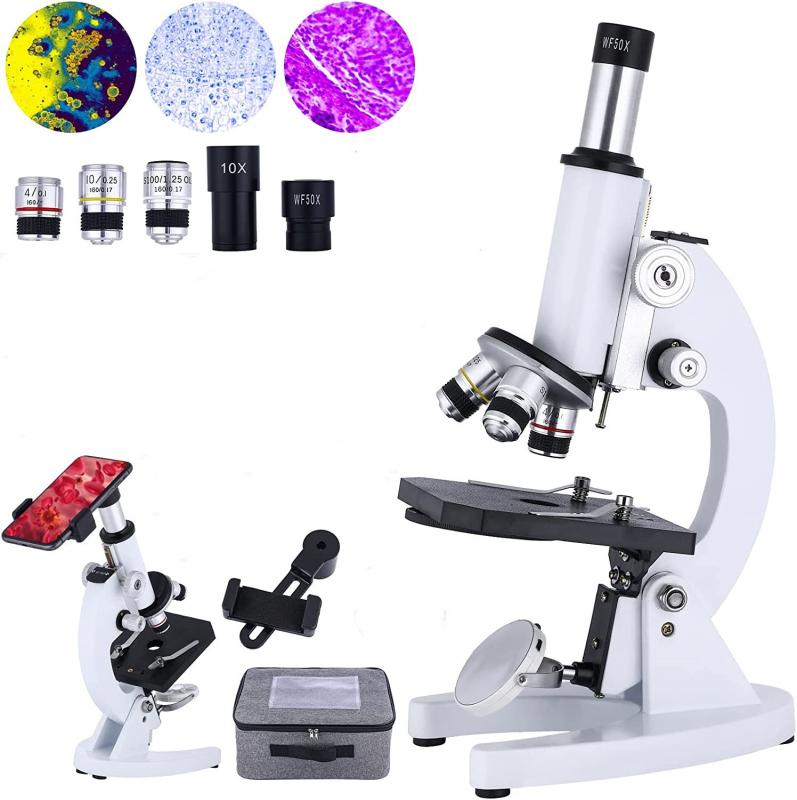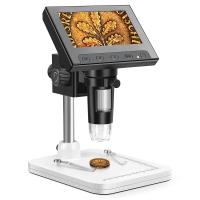What Germs Look Like Under A Microscope ?
Germs, also known as microorganisms, can have different shapes and sizes when viewed under a microscope. Bacteria are typically small, single-celled organisms that can appear as rods, spheres, or spirals. Some bacteria have a protective outer layer called a capsule, while others have hair-like structures called flagella that help them move. Viruses, on the other hand, are much smaller than bacteria and can only be seen with an electron microscope. They have a simple structure consisting of genetic material (DNA or RNA) surrounded by a protein coat. Fungi are larger than bacteria and can appear as single cells or as multicellular structures such as molds or yeasts. They have a complex structure with a cell wall and a nucleus containing genetic material. Protozoa are single-celled organisms that can move using hair-like structures called cilia or flagella. They can have different shapes and sizes, ranging from spherical to elongated. Overall, the appearance of germs under a microscope can vary depending on the type of microorganism and its characteristics.
1、 Bacterial morphology
Bacterial morphology refers to the study of the physical characteristics of bacteria, including their shape, size, and structure. When viewed under a microscope, bacteria appear as small, single-celled organisms that can take on a variety of shapes, including spherical (cocci), rod-shaped (bacilli), and spiral (spirilla).
Cocci bacteria are round or oval-shaped and can occur in clusters or chains. Bacilli bacteria are rod-shaped and can be found singly or in pairs. Spirilla bacteria are spiral-shaped and can be found singly or in chains.
In addition to their shape, bacteria also have unique structures that can be observed under a microscope. These structures include cell walls, cell membranes, and flagella. Some bacteria also have pili, which are hair-like structures that help them attach to surfaces or other cells.
Recent advances in microscopy technology have allowed scientists to study bacteria in even greater detail. For example, super-resolution microscopy techniques have enabled researchers to visualize the intricate structures of bacterial cells, including their internal organelles and protein complexes.
Overall, the study of bacterial morphology is an important area of research that helps scientists better understand the biology and behavior of these important microorganisms. By understanding the physical characteristics of bacteria, researchers can develop new strategies for controlling bacterial infections and improving human health.

2、 Viral morphology
What germs look like under a microscope is a fascinating topic that has been studied for centuries. Viral morphology, in particular, is the study of the structure and shape of viruses. Viruses are tiny infectious agents that can only replicate inside living cells. They are not considered living organisms because they cannot reproduce on their own.
Under a microscope, viruses appear as small, round or oval-shaped particles. They are much smaller than bacteria and can only be seen with an electron microscope. The outer layer of a virus is made up of proteins and lipids, which protect the genetic material inside. The genetic material can be either DNA or RNA, depending on the type of virus.
Recent studies have shown that viruses can have a wide range of shapes and sizes. Some viruses are shaped like rods, while others are more complex and have a spherical shape. The shape of a virus is determined by the arrangement of its proteins and the way they interact with each other.
Understanding viral morphology is important for developing treatments and vaccines for viral infections. By studying the structure of viruses, scientists can identify potential targets for drugs and vaccines. They can also learn how viruses enter and exit cells, which can help in the development of antiviral therapies.
In conclusion, what germs look like under a microscope is a fascinating topic that continues to be studied by scientists around the world. Viral morphology is an important area of research that can help us better understand how viruses work and how we can develop effective treatments and vaccines to combat viral infections.

3、 Fungal morphology
What germs look like under a microscope is a fascinating topic that has been studied for centuries. With the advancement of technology, we now have a better understanding of the morphology of different types of germs. Fungal morphology, in particular, has been extensively studied due to the increasing prevalence of fungal infections.
Fungi are eukaryotic organisms that can be found in various environments, including soil, water, and air. They can also infect humans and animals, causing a range of diseases from mild skin infections to life-threatening systemic infections. Under a microscope, fungi appear as multicellular structures with a complex morphology. They have a cell wall made of chitin and glucans, which gives them a rigid structure.
The morphology of fungi varies depending on the species and the stage of their life cycle. Some fungi have a filamentous structure, with long branching hyphae that form a network called mycelium. Others have a yeast-like structure, with round or oval cells that can reproduce by budding. Some fungi can switch between these two forms depending on the environmental conditions.
Recent studies have also shown that fungi can form complex structures called biofilms, which are communities of cells that adhere to surfaces and protect themselves from the immune system and antifungal drugs. Biofilms are a major concern in clinical settings, as they can cause persistent infections that are difficult to treat.
In conclusion, the morphology of fungi is a complex and fascinating topic that is still being studied. Understanding the structure of fungi is essential for developing new treatments and preventing fungal infections.

4、 Protozoan morphology
Protozoa are single-celled organisms that belong to the kingdom Protista. They are found in a variety of environments, including soil, water, and the bodies of plants and animals. Protozoa are known to cause a number of diseases in humans, including malaria, amoebic dysentery, and sleeping sickness.
When viewed under a microscope, protozoa can have a variety of shapes and sizes. Some are spherical, while others are elongated or have irregular shapes. They can range in size from less than one micron to several hundred microns in diameter.
Protozoa have a number of distinctive features that can be seen under a microscope. These include a nucleus, which contains the organism's genetic material, and various organelles, such as mitochondria and vacuoles. Some protozoa also have flagella or cilia, which are used for movement.
Recent advances in microscopy have allowed scientists to study protozoa in greater detail than ever before. For example, high-resolution electron microscopy has revealed the intricate structure of the malaria parasite, including its complex life cycle and the mechanisms by which it evades the human immune system.
Overall, the study of protozoan morphology is an important area of research that has the potential to lead to new treatments and therapies for a variety of diseases.







































